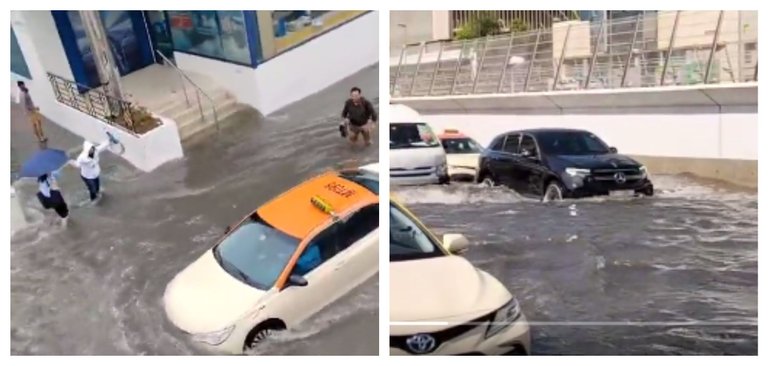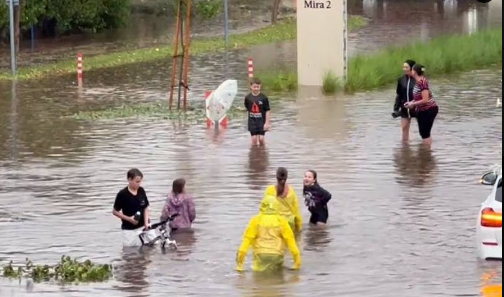Dubai Deluge
In a surprising turn of events, Dubai, known for its arid climate and futuristic skyline, recently experienced severe flooding that left residents and authorities grappling with the aftermath. The unexpected deluge, which occurred some two days ago, has raised concerns and prompted a closer examination of the factors contributing to this rare natural event.

Causes:
- Unusual Rainfall: Rare heavy rainfall overwhelmed Dubai's drainage, surpassing its usual capacity.
- Urbanization Impact: Rapid development and impermeable surfaces reduced natural drainage, exacerbating the situation.
- Climate Change: The flooding may signal broader climate change impacts, bringing more extreme and unpredictable weather.
Consequences and Responses:
- Traffic Disruptions: Flooded streets led to road closures and delays, straining emergency services.
- Property Damage: Businesses and homes faced damage, with ongoing assessments to determine the extent.
Dubai authorities have been swift in responding to the flooding, deploying emergency services to assist affected residents and businesses. However, the unexpected nature of the event has highlighted challenges in the city's preparedness for such occurrences.
Solutions:
Drainage Infrastructure: Invest in advanced systems to handle heavy rainfall and improve stormwater management.
Green Spaces: Integrate more green areas and permeable surfaces in urban planning to reduce runoff.
Resilient Design: Implement climate-resilient principles in future developments, including flood-resistant infrastructure.
Early Warning Systems: Utilize advanced meteorological tech for timely alerts, enhancing preparedness.

The recent flooding in Dubai serves as a reminder that even cities in traditionally dry climates are not immune to the impacts of climate change. As the city works towards recovery, a comprehensive and forward-looking approach to urban planning and infrastructure development will be crucial in building resilience against future weather challenges.
